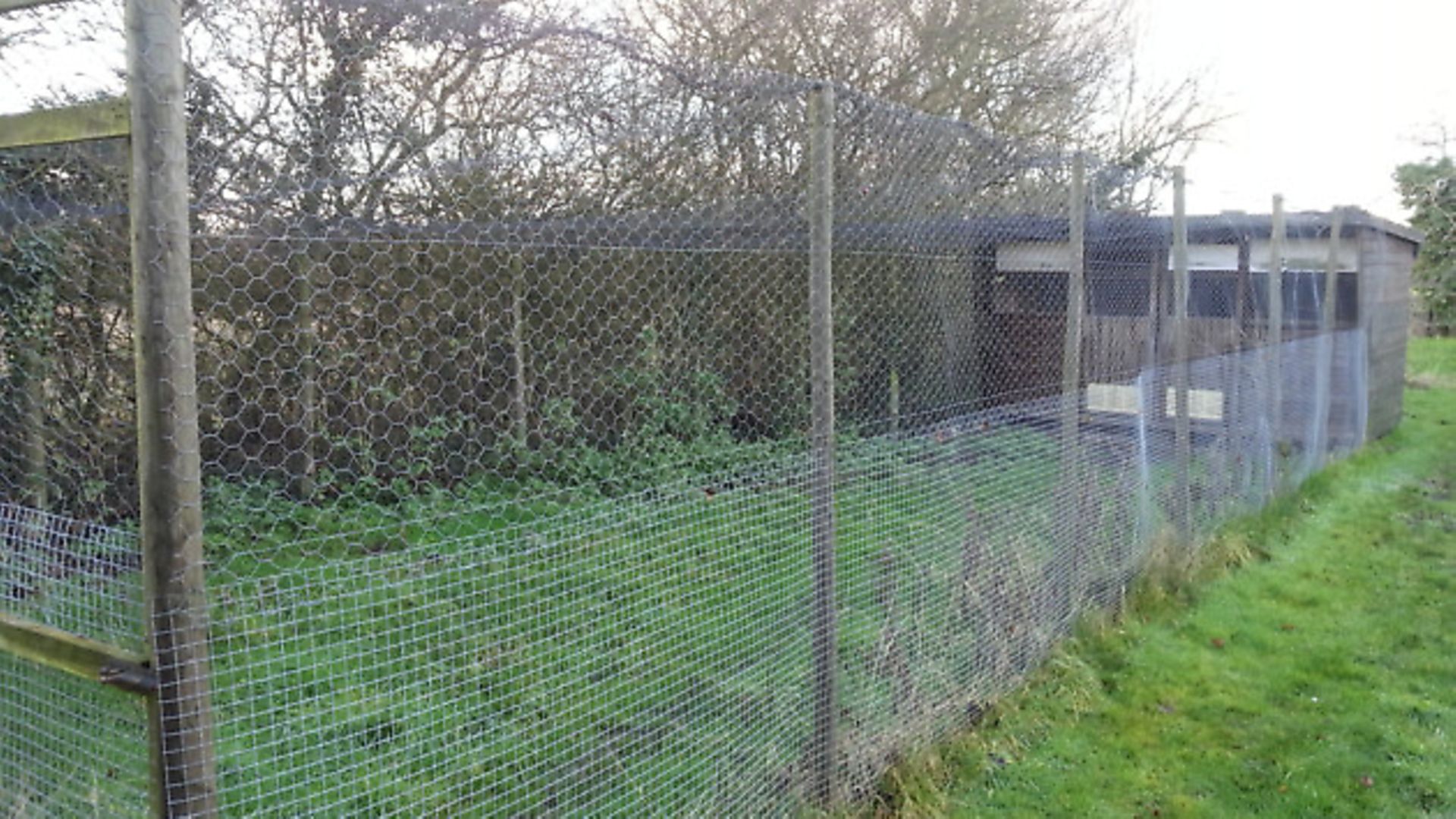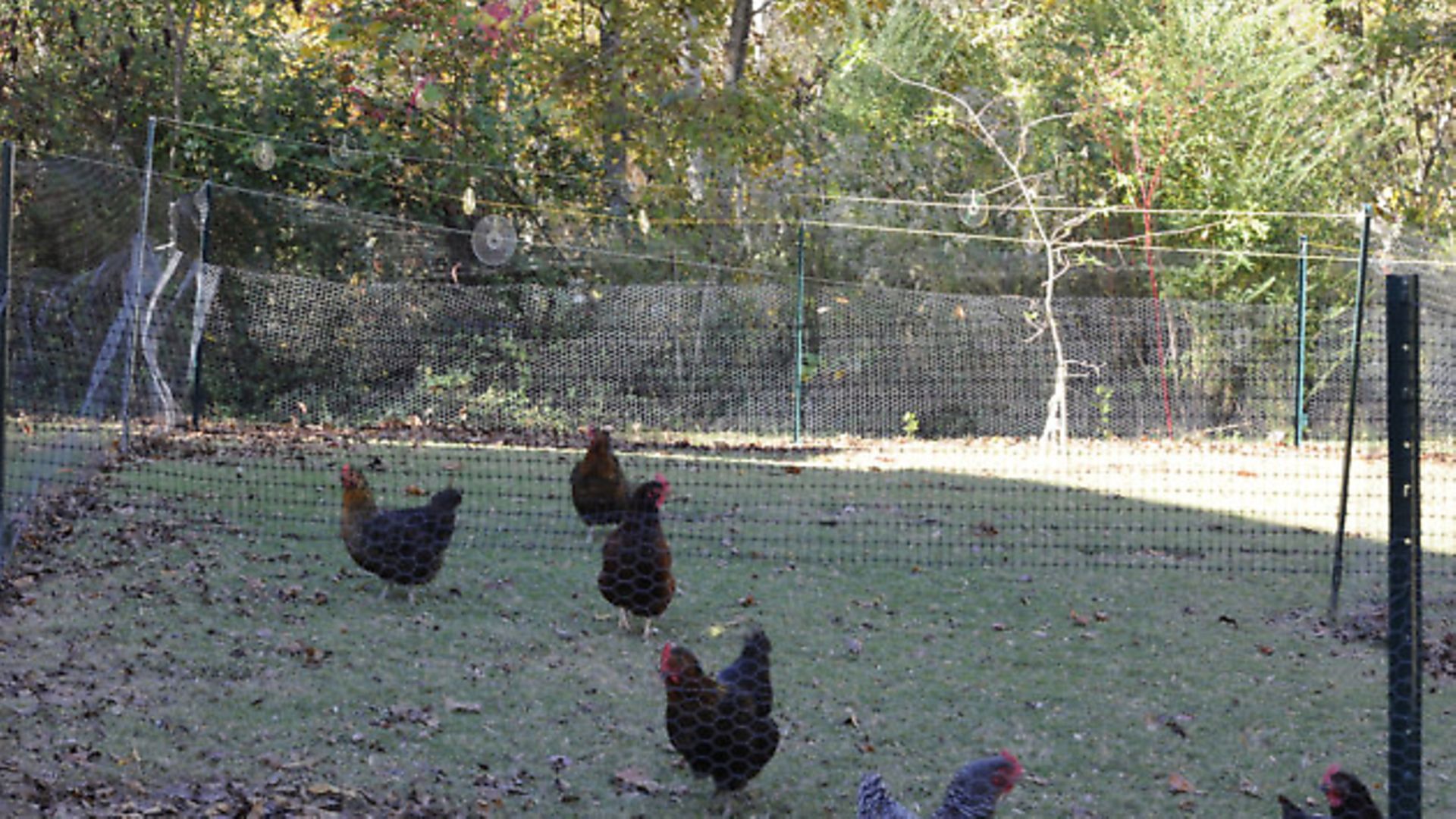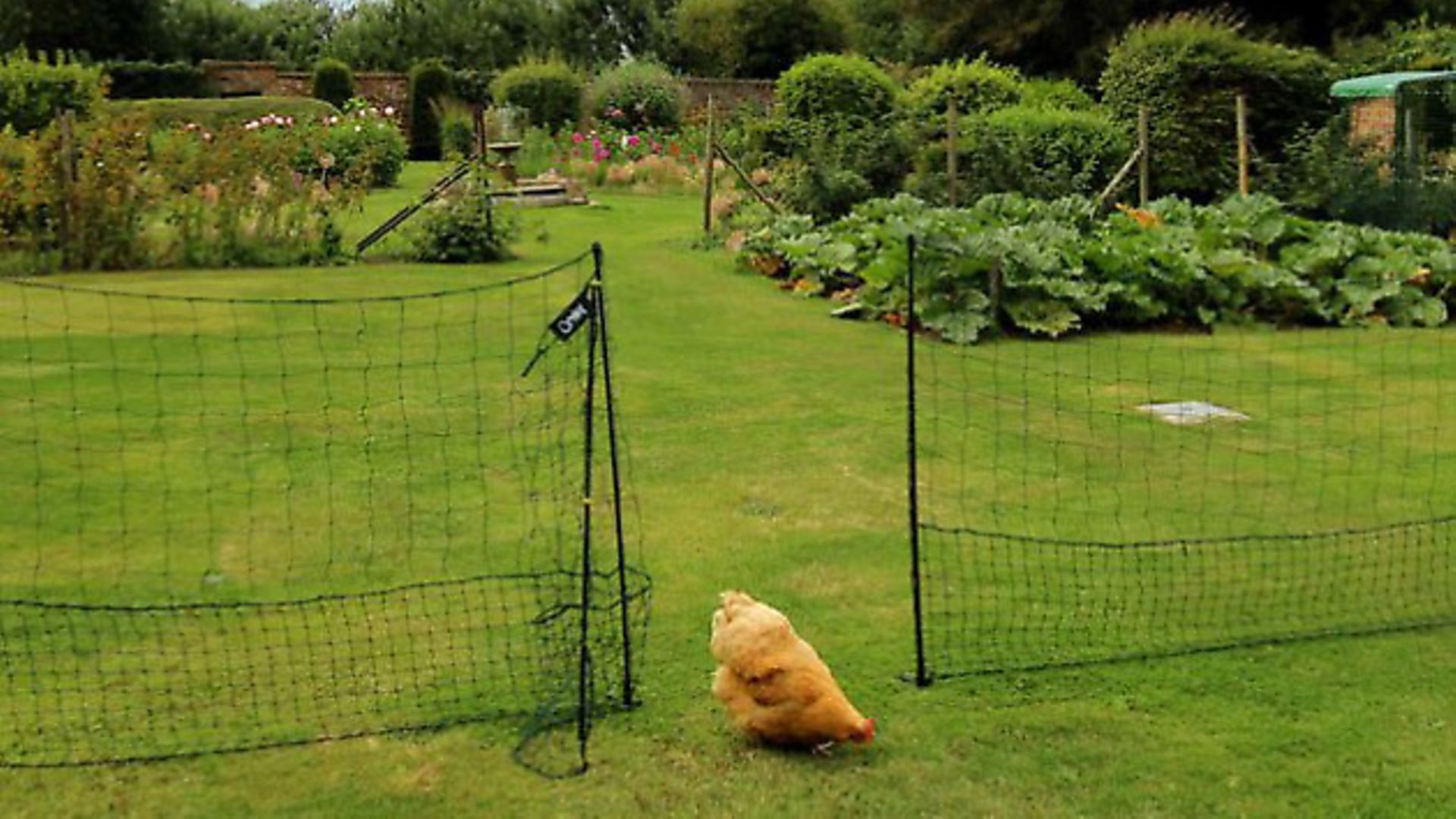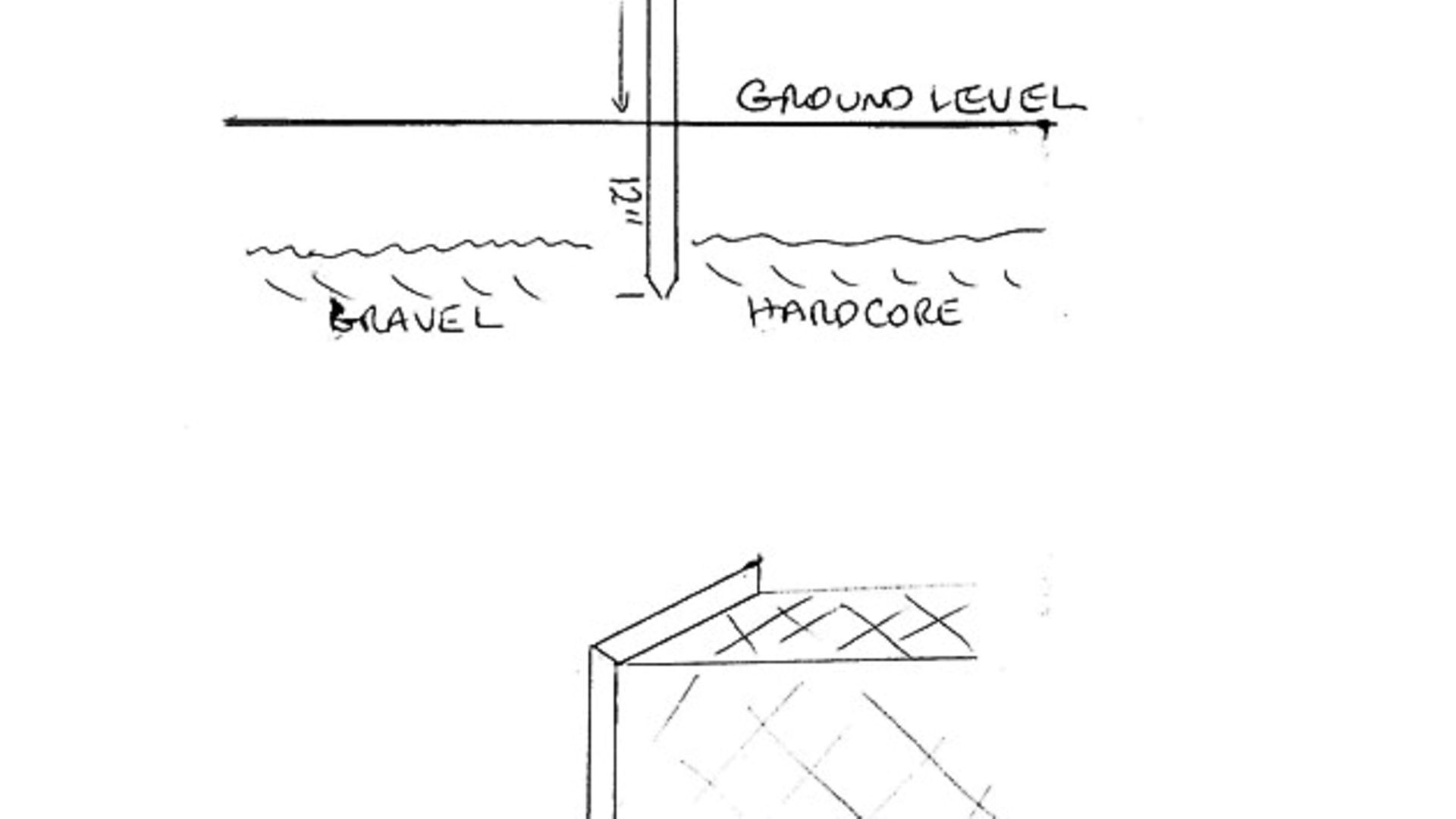Terry Beebe considers the best products to help protect your poultry

Keeping birds safe and secure is a major problem, as keeping predators at bay requires strong defences – not only in the height, but also at the base under the fencing.
Using a strong weld mesh is advisable and, although this can be more expensive, it is worth the extra bit. However, many breeders do use basic chicken wire, and, although not as strong, it does a satisfactory job and is more economical.
The alternative is to use electric fencing. This gives really good protection, but it needs to be installed correctly for it to really do its job properly.

CHICKEN WIRE
This is the old favourite, and has been used as the main type of poultry fencing for many years. The wire is fully galvanized, and although not as strong as weld mesh it is very durable.
The main problem with chicken wire is making it secure. It is very flexible, so you have to make sure that the wire is secured using plenty of support posts to keep the wire tight and even, and this will give the necessary security for the birds.
Very strong predators, such as foxes, badgers and dogs can, in certain circumstances, break through the fencing. To help prevent this, use a stronger wire doubled up at the fence base, or some other means to prevent the wire from being broken.

SIZE OPTIONS FOR CHICKEN WIRE
• 6mm x 6mm hole: The best option for rodent protection;
• 13mm x 13mm hole + 13mm x 25mm hole: Often used for bird protection;
• 20mm x 20mm hole: Ideal for protection from rats and squirrels.
• 25mm x 25mm hole + 50mm x 50mm hole: This medium weight fencing is ideal for fox protection.

WELD MESH
Weld mesh is thicker than chicken wire and, provided it is fitted securely, there will be very few predators that can break through it. It is available in various wire thicknesses, between 2.5mm and 3.5mm. The mesh also comes in different mesh patterns 50 x 50mm or 75 x 25mm; there is a selection of heights from 0.9m to 4m high.
Weld mesh is ideal for any boundary, animal and security fencing, and is available in plain galvanized, or with a plastic coating in green or black.
The mesh is easier to secure than chicken wire, although not as easy to fix due to its strength, which makes it less flexible.
ELECTRIC FENCING
Using electric fencing is a perfect way to protect the birds, and gives very good security. It can be powered by mains or a special, purpose-built battery.
The fencing can be purchased in a variety of lengths, and starts at 25m with a height of 102cm. You can increase the length by adding further fencing, but you must make sure the power source is adequate for the length you are using.
The fencing is bought as a kit with all the posts, pegs, and earth stakes needed. The posts buy a HT lead for mains supply, or a 12V battery (don’t forget the battery charger!).
OMLET FENCING
This is a dark green chicken fencing that blends into the surrounding garden. It is a removable fence, which is easy to move as the poles simply push into the ground, and it also comes with a built-in gate.
The height is 1.25m and is suitable for most breeds of chickens, as the bottom section of the fencing has smaller holes to prevent bantams and smaller breeds from escaping.
The Omlet fencing is intended to be used as a means of keeping your chickens in a contained area. It is not predator proof and cannot be electrified.
THE TOP OF THE FENCE
The best way of preventing the fox from climbing the fence is to make it as high as possible, with a minimum height of 1.8m (6ft).
As a real deterrent, lean the top of the fencing outwards. This stops the animal from climbing over, and you can even run a single electric cable around the top as a further protection.
THE FENCE BASE
Foxes, and some other predators, will dig, and can access a pen easily under the wire – especially if the ground is quite soft.
If you have a badger problem, then a strong wire mesh around the base of the pen is advisable, as they can rip through chicken wire quite easily.
Dig a trench about 8/12 inches deep and put some hardcore into the base (even broken glass will do). Bend the wire and turn the bottom outwards, then add more hardcore matter on to the top of the wire, and fill in the trench with soil.
Use common sense. If you find the ground easy to dig, then so will the fox. If this is the case, go down a little deeper and fill more heavily. Use any rubble, the sharper the better, as this will prevent digging and, in turn, save your birds.
In summary, it is worth devoting considerable time and effort in getting your fencing right. Many poultry keepers have learned to their cost that inadequate protection will be ruthlessly exploited by a variety of wily predators!
Image(s) provided by:
Archant
Archant
Archant
Archant







